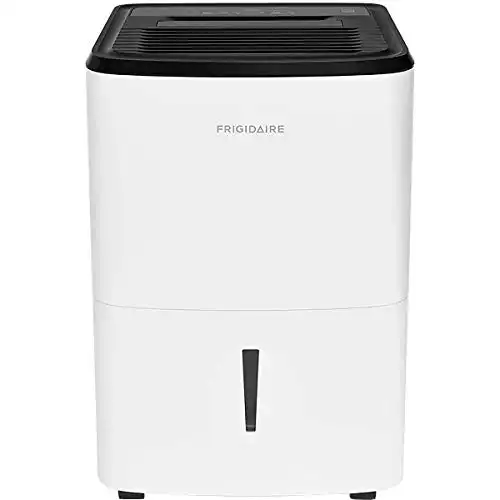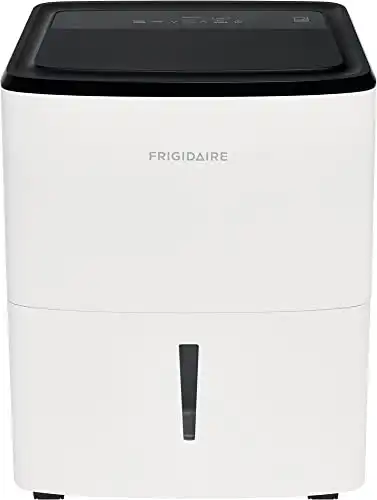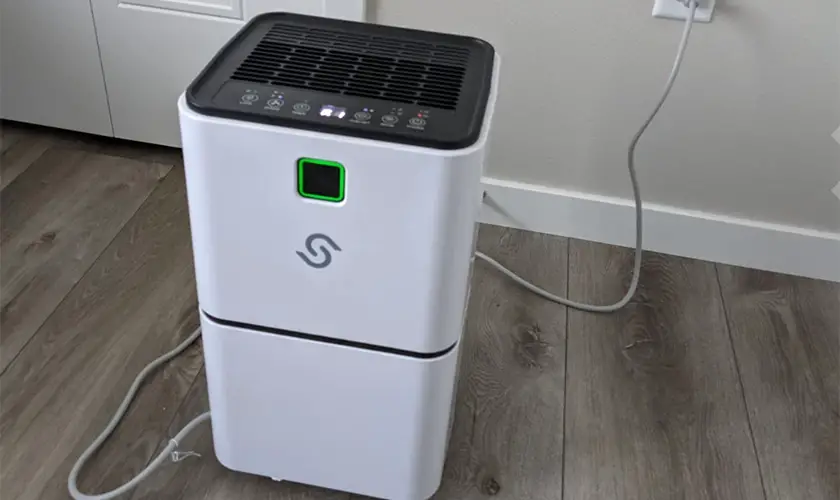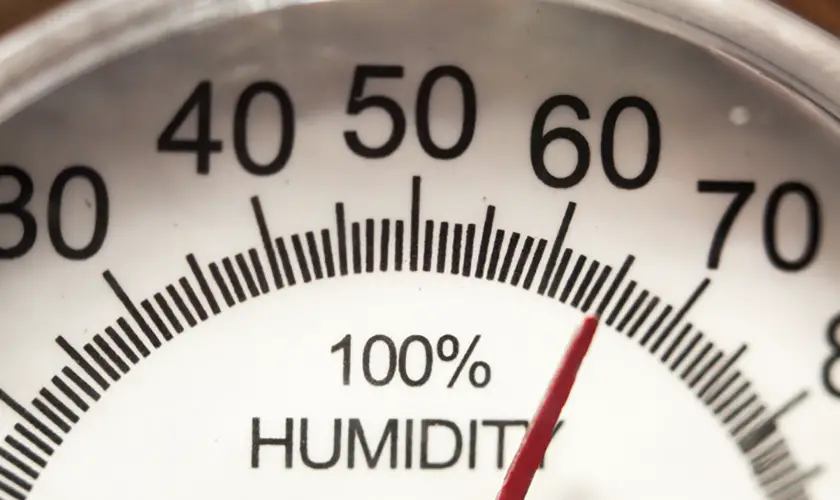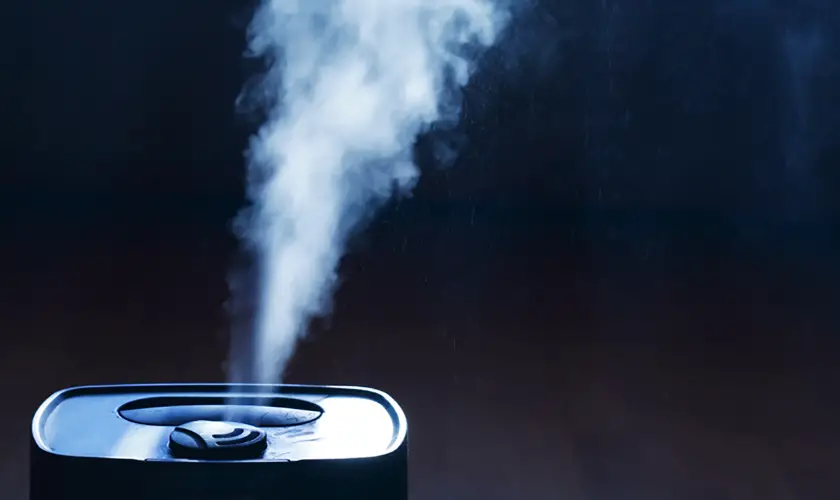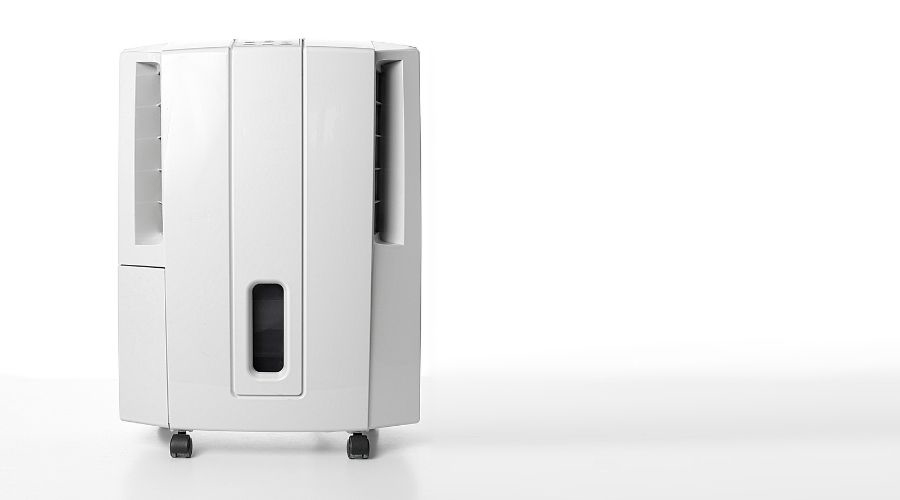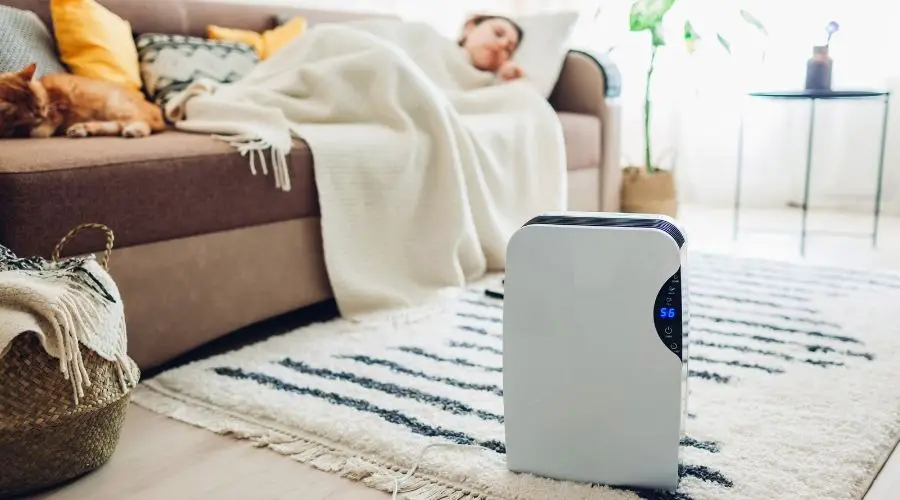
Using a dehumidifier can do justice if you live in a very humid region or have some breathing issues like asthma or allergies. That said, there are plenty of other reasons to use a dehumidifier. But where are the best places to place your new dehumidifier?
When looking at portable dehumidifiers, knowing where you intend to use them is essential. A dehumidifier’s main goal is to remove vast amounts of moisture from the air.
It’s best to place a dehumidifier in rooms where you experience damp and heavy air conditions. Rooms like your laundry room and the bathroom are other great examples of rooms where you should use a dehumidifier.
Laundry and bathrooms see tons of moisture from the washing machine and bathwater. A large amount of water in these rooms makes them very humid.
With all the excess humidity, you can start seeing mold and mildew growth, leading to horrible health effects.
As you continue to read this article, we will discuss how a dehumidifier works and the benefits of using one. Along with that, this article will also discuss the best areas where you should be placing your dehumidifier. Finally, we will give you plenty of examples of the highest-rated dehumidifiers on the market.
How Do Portable Dehumidifiers Work?
There are two primary types of dehumidifiers. The more common dehumidifiers use refrigerants. Refrigerant dehumidifiers work very similarly to how air conditioners cool down the air.
However, these dehumidifiers focus more on removing moisture than cooling the room’s atmosphere.
The second type of dehumidifier uses desiccant material to absorb moisture from the air. The material in these dehumidifiers is much like the silica packs you would find in a new box of shoes or beef jerky bags.
These little bags are filled with silica that absorbs moisture from the air. The silica in these bags is a type of desiccant material.
Refrigerant Dehumidifiers
Refrigerant dehumidifiers, like air conditioners, use refrigerant to chill the air surrounding their evaporator coils. The water vapor in the air creates water droplets on the evaporator coils as the air flows past them.
The process in which these water droplets form is condensation. The way these droplets of water form is the same process in which drops of water on the outside of your cold glass of water form.
The condensation process in a dehumidifier is as followed. As the warm water vapor in the hot air flows past the cold evaporator coils, it drastically cools it.
Once the moisture in the air is cold enough, the water in the air condenses and forms drops of water on a solid surface.
These droplets will continue to develop and finally fall into a water collection container at the bottom of the dehumidifier. The air travels through the dehumidifier and comes into contact with the condenser coils and the compressor.
The compressor and its coils emit heat, which warms the air somewhat. As these components warm the air, a fan will push it back into the room.
When the now-drier heated air returns to the room’s environment, the excess humidity in the room is redistributed to the dry air. The temperature in the room will become more pleasant and soothing as the moisture redistributes.
This is because the air’s water determines the humidity. The more water vapor the air can carry, the hotter it is. That being said, your dehumidifier has eliminated the moisture from the atmosphere currently floating around your room.
The remaining water vapor in the air has more room to move around. Therefore, the overall humidity level in the space where your dehumidifier is placed will become thinner and less apparent as it continues to work.
Desiccant Dehumidifiers
A desiccant dehumidifier is the second type of dehumidifier. These dehumidifiers draw in air and pass it through a desiccant substance inside the device.
The process only needs a fan to move the air through the dehumidifier. Because these dehumidifiers do not require heating or cooling to remove moisture, they work fantastic in areas that experience freezing weather.
The sachets of silica found in shoe boxes or beef jerky packages are an excellent example of a desiccant substance. These silica baggies absorb any moisture that enters the near vicinity.
Desiccant substances are hygroscopic materials that accumulate a lot of water from the air.
How desiccant dehumidifiers work is easier to understand than refrigerant dehumidifiers. A desiccant dehumidifier will use a fan to extract moist air from the surrounding area.
As the air travels through the device, it is forced through a filter made of desiccant material. As the air travels through it, moisture is absorbed into the material.
Which Type of Dehumidifier Should I Choose?
You only have two types to choose from when you need a dehumidifier for your home. The central aspect you have to consider is the typical temperature where you live.
For instance, you should use a desiccant humidifier if you live in a frigid area like Alaska, where they regularly experience sub-freezing temperatures during the winter months.
Refrigerant dehumidifiers won’t work well in that weather because the extreme cold will freeze the coolant inside the dehumidifier.
However, suppose you live in Florida or even Louisiana, where it is hot and humid year-round. In that case, you can choose either a refrigerant or desiccant humidifier.
The weather will allow the refrigerant dehumidifiers to work perfectly. At the same time, desiccant dehumidifiers work perfectly well regardless of the temperature around them.
Benefits of Using a Dehumidifier?
A dehumidifier, in a nutshell, sucks in air and eliminates moisture from it. A portable dehumidifier can help with a few things. First, our bodies produce sweat, which is a natural cooling agent for our skin.
However, the more moisture in the air, the less sweat our skin can collect to stay colder.
Because of the high humidity levels, primarily in the air, our skin will absorb the moisture from the atmosphere. Thus, the sweat we produce is excess moisture that will sit and roll off our skin.
While your dehumidifier removes moisture from the air, it will make you feel more comfortable and relaxed because it allows your skin to process sweat naturally.
1. It’s Extremely Cost-Effective
In addition, this comfortability provided by your dehumidifier is very cost-effective. For instance, if you run an air conditioner with the same wattage and for the same amount of time, you will get more out of the dehumidifier when comparing energy efficiency.
2. Dehumidifiers are Energy-Efficient
Dehumidifiers are much more energy-efficient than air conditioners because dehumidifiers work to remove moisture from the air rather than cool it.
As a result, the energy needed to cool the air and keep it cold is much higher than the energy required to remove moisture.
Removing humidity from the air will make it more pleasant to breathe. A dehumidifier may be a lifeline for those who suffer from respiratory problems such as allergies and asthma.
3. Dehumidifiers Help with Allergy Issues
Furthermore, dehumidifiers aid in the elimination of allergens such as dust mites and mold.
Dust mites are a common cause of allergy and asthma symptoms. Therefore, warm, humid conditions are ideal for these tiny insects.
Unfortunately, they may still live under adverse conditions, although they prefer to avoid them. That said, a dehumidifier will try to produce an uncomfortable environment in your home, reducing their number.
4. Dehumidifiers Help with Mold Issues
Mold is another allergen related to allergy and asthma symptoms, including coughing, sneezing, chest pain, and trouble breathing. Mold, like dust mites, thrives in wet, humid environments.
Mold comes in many different types, all of which are classified as other species of fungus that biodegrade materials. Having so many species makes mold one of the worst for allergy sufferers and homeowners.
Mold may become quite dangerous if left to grow unchecked. Mold grows in humid and wet places of the home, like your bathroom and laundry room. Mold often prefers areas with moisture levels varying from 50% to 70%.
Because mold requires perfect development conditions, a dehumidifier works wonders in preventing such places from reaching appropriate humidity levels.
Consequently, the amount of mold in the air decreases, as does the amount of mold that may be slowly destroying your home.
Do you ever get musty or odorous scents in your basement or laundry room? This smell is generally caused by damp circumstances or an abundance of moisture in the air.
When wet air comes into contact with cold surfaces near or around your home, condensation and musty odors can form. The development of mold and mildew usually produces this damp odor.
Plenty of dehumidifiers on the market are used for different-sized rooms. You can easily find the perfect dehumidifier to suit your needs for any room size you have in your home. From small to large, a dehumidifier will absorb the water in the air very quickly.
5. Requires Little to No Maintenance
Dehumidifiers require only a small amount of maintenance. The only thing you have to do regularly with a dehumidifier is empty the water collection bucket.
However, your dehumidifier should be taken apart and thoroughly cleaned every month of use. This process is rapid and easy; it should not take you longer than 30 to 45 minutes. Cleaning your dehumidifier will help prevent mold and mildew from growing inside the device.
Besides cleaning it often, you will need to regularly empty the water collection bucket to prevent overfilling and leaks. With that said, there is a permanent solution to this.
There are vast amounts of dehumidifiers that have a drainage tube or hose that you can lead outside. This drainage hose will work to continuously remove water from the dehumidifier, making it so that you do not have to empty a bucket every few hours.
6. Betters the Air Quality
Overall, dehumidifiers help to enhance air quality. It improves the comfort and cleanliness of the rooms in which it is used.
This is achieved by removing moisture from the air and filtering it to purify it. As a result, the atmosphere in any space is generally more relaxed and fresher than before.
Where are Good Places to Set Up My Dehumidifier?
Your goal is the main thing you should consider when setting up your dehumidifier. This means that you should place it where you need it the most.
For Respiratory Issues
Suppose you primarily use your dehumidifier to alleviate some respiratory issues. In that case, placement will matter, especially if you are trying to look and prevent mold or mildew from building up.
Those who want to use your dehumidifier to help you breathe better should be located in the room where you want to relax.
You can also move the dehumidifier around to constantly allow it to help you breathe better.
That said, if you want to make the air, you breathe purer, set up your dehumidifier near you. When your dehumidifier has been set up close to you, it will allow you to start to feel the effects faster. This is because the dehumidifier close to you will help clean the air around it and you sooner.
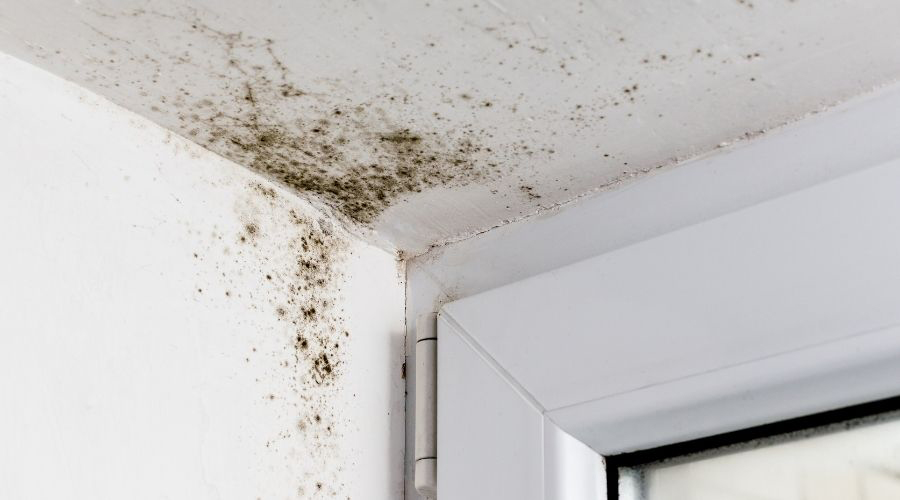
Preventing Mold or Mildew
If you want to use the dehumidifier to prevent mold or mildew build-up, then the best place to set it up is in those rooms with a high potential to grow mold.
Any room with a lot of running water can develop mold if it is not taken care of. These rooms include:
- Bathroom
- Kitchen
- Laundry room
- Basement
- Water heater and water filtration rooms
These areas see high amounts of water traffic. Rooms like the kitchen, bathroom, and laundry room allow water to access the open air easily. When this happens, water can be absorbed into the air very quickly, making it very humid.
After using the running water, putting a dehumidifier in these rooms makes the dehumidifier remove vast amounts of the excess water from the air. This has multiple purposes.
Mainly it will prevent these rooms from holding enough moisture in the air to allow mildew and mold to form and start growing.
With that said, dehumidifiers are also great at removing musty smells. The smells caused by wet carpet or furniture will be completely removed with a dehumidifier.
Not only that, but dehumidifiers also help dry wet items and areas much faster. For instance, one of your water pipes breaks and starts to flood part of your home.
Once the broken pipe or water source is fixed, you can use your dehumidifier to help dry those areas. Then, as you use towels, mops, or whatever you have to dry up the flooded water, the dehumidifier will start to suck up the moisture from the air.
A dehumidifier works for this because the spilled or flooded water has access to the air above it. Therefore, the water will naturally evaporate slowly and be absorbed into the air.
The dehumidifier will essentially counteract this process by removing the water from the air faster than the water can be absorbed by it.
Once all the water is cleaned up, there is a good chance that that area will start to give off a wet and musty smell. However, if you leave your dehumidifier in the place, the smell will eventually disappear.
What Are Some Highly Rated Dehumidifiers?
As this article draws closer to its end, we will provide a few examples of dehumidifiers that are a perfect fit for any need.
The Frigidaire FFAD5033W1 is strong enough to reduce by up to 50%, which aids in the prevention of wood rot, mildew, and other pests that may harm your house and cause allergies.
Upstairs can keep the humidity at levels suitable for most people in rooms as large as 1,200 square feet.
It is Energy Star certified and includes a few pleasant design elements. Like a lay-flat carry handle and built-in cable storage that make it simple to move around your home and store during the dry seasons. It also has an adaptable pump.
All dehumidifiers must regularly drain the water they extract from the air. The pump allows you to automatically send the water into a sink or out a window.
However, suppose you don’t mind manually emptying a tank or can transfer the water down a basement-floor drain through a hose.
Frigidaire’s FFAD2233W1 dehumidifier is less expensive and smaller than our top selection (think carry-on bag versus suitcase). It’s also less potent. However, this makes it a better fit for tiny areas, where larger computers would be overkill in every way.
The bigger top-pick Frigidaire features Energy Star certification, comfy pocket handles, and convenient cord storage.
However, it lacks a pump. So you must manually empty the tank or put the machine to drain into a sink or floor drain—which is seldom possible in a home office or bedroom.
In the most significant ways, GE’s APER50LZ is nearly identical to the Frigidaire FFAP5033W1. It has the same capability to remove moisture daily and is Energy Star certified. It features a pump to assist you in discharging the water into a sink or out a window.
While compared to Frigidaire, the minor flaws include small pocket-style handles that give a less solid hold. It also lacks a spot to wrap the cable when moving or storing the machine. Nevertheless, obtaining this GE model more efficiently or at a lower price is an excellent choice.
Final Thoughts
As this article ends, we hope that all the information we have provided will help you in your dehydrator endeavors.
We hope that providing you with the list of benefits of using a dehydrator and examples of where to use them will help you make the air you breathe more healthy.
Along with the examples of the top-rated portable dehumidifiers we have provided, you will help steer you towards the perfect dehumidifier for you.


